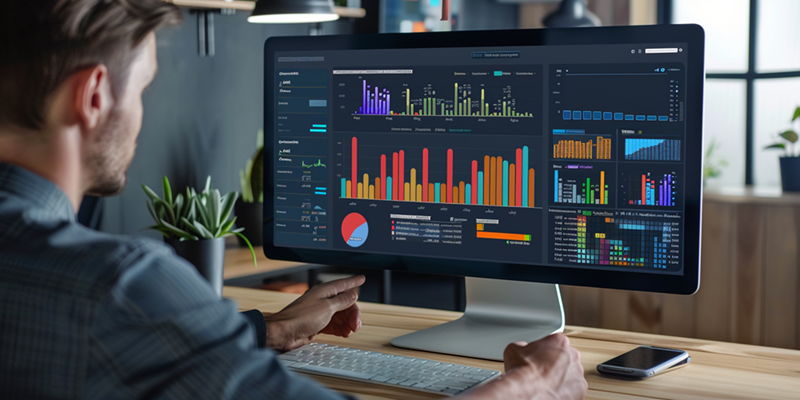In the competitive business landscape of today, excelling in human resources management is not just about understanding people but also about leveraging the vast array of data now at an employer’s disposal. HR analytics, or workforce data analysis, has emerged as a critical cornerstone for those who wish to enhance how they manage and make decisions regarding their workforce. Here, we delve into the methodologies and immense value that HR analytics brings, and how organizations can apply these techniques to elevate their performance.
Understanding HR Analytics
HR analytics is the intersection of data analysis and human resource management, representing a transformative strategy for HR departments determined to go beyond traditional management techniques. By tapping into the power of workforce data, HR professionals can dissect and understand a variety of metrics from employee performance to hiring trends. This quantitative approach enables organizations to make evidence-based decisions, leading to effective talent management, an optimized workforce, and ultimately, an improved bottom line.
Maximizing employee management through HR analytics starts with the deliberate and systematic collection of critical employee data. This ranges from performance metrics, employee satisfaction scores, turnover rates, to recruitment analytics. The goal is to distill this information into actionable insights that can identify opportunities, predict future trends, and contribute to a strategic advantage in managing a company’s most valuable asset — its people.
The Significance of HR Analytics
HR analytics is not merely a tool — it’s a way to bring a measurable and data-driven approach to decisions traditionally driven by intuition. By effectively employing HR analytics, organizations can reap extensive benefits — from refining recruitment strategies that attract the right candidates to understanding the root causes behind employee turnover. HR analytics also allows for the automation of administrative tasks, offering HR professionals the room to focus on more strategic initiatives.
Furthermore, predictive analytics within HR can forecast crucial workforce trends, guiding leadership to proactively address potential issues before they arise. This proactive approach helps in crafting preemptive strategies that can save resources and improve employee retention. By gaining a centralized and holistic view of workforce data, HR teams are positioned to contribute to business outcomes through informed decision-making.
HR Analytics in Application
Harnessing the power of HR analytics is showcased in its diverse applications across different HR spheres. For example, talent management benefits greatly from people analytics, enabling the tracking and improvement of employee satisfaction and efficiency. Voice-of-employee programs and engagement surveys powered by data can reveal insights into how to cultivate a more productive and satisfying workplace environment.
Workforce analytics provides an overview of company-wide employee trends, which can shed light on issues that may not be immediately apparent, such as the impact of part-time vs. full-time employment on financial health. By keeping a finger on the pulse of the company’s workforce through data, HR can play a pivotal role in ensuring a positive trajectory for the organization. Lastly, diversity analytics emphasizes the importance of a varied workforce, balancing compliance with the benefit of having a wide range of perspectives.
Initiating HR Data Analysis
Embarking on an HR analytics journey calls for a structured approach. First, organizations must clearly define their HR objectives in line with their overarching goals. Next, the necessary data spanning across various HR functions must be collated. Then, relevant KPIs and metrics that align with those objectives should be chosen to facilitate measurement and monitoring.
Effective data visualization through tools such as dashboards will then turn complex datasets into understandable and actionable insights. The final, crucial step is the dissemination of these insights throughout the organization, applying the findings to enhance HR strategies and instigate positive change. With this stepwise adoption, HR analytics will cease being a cumbersome idea and become an integral part of HR operations.
Overcoming HR Analytics Obstacles
On the path to adopting HR analytics, challenges such as developing analytical competencies within the HR team, managing data from multiple sources, and ensuring compliance with privacy regulations will arise. Balancing the quantitative with the innately qualitative nature of HR — emphasizing that data supports, not replaces, the human element — is also essential.
Thus, organizations must invest in upskilling their HR teams, leveraging advanced HR analytics tools that simplify data management, and establish robust, compliant data practices. Recognizing and facing these challenges is paramount for the successful integration of analytics into HR functionalities.
Final Thoughts and Essential Points
In today’s business environment, successful human resources management goes beyond knowing your workforce; it harnesses the power of HR analytics. This crucial tool involves analyzing workforce data to make informed management decisions. Utilizing HR analytics allows employers to understand employee trends, improve hiring practices, and enhance overall workplace efficiency.
As we tap into the depths of HR analytics, we find approaches that not only interpret data but also predict future trends, enabling proactive rather than reactive HR strategies. It transforms raw data into actionable insights. For instance, data can reveal patterns in employee turnover, leading to better retention strategies. Similarly, analyzing performance metrics can guide the development of more effective training programs.
Organizations eager to thrive must integrate HR analytics into their operations. The deployment of such analytics can pinpoint gaps in skills, bolster employee engagement, and streamline talent management. By analyzing data like employee surveys and performance records, organizations gain a strategic edge, fostering a healthier, more dynamic workforce that aligns with business objectives. This strategic use of HR analytics pushes companies ahead in the competitive marketplace, ensuring they not only survive but excel.

